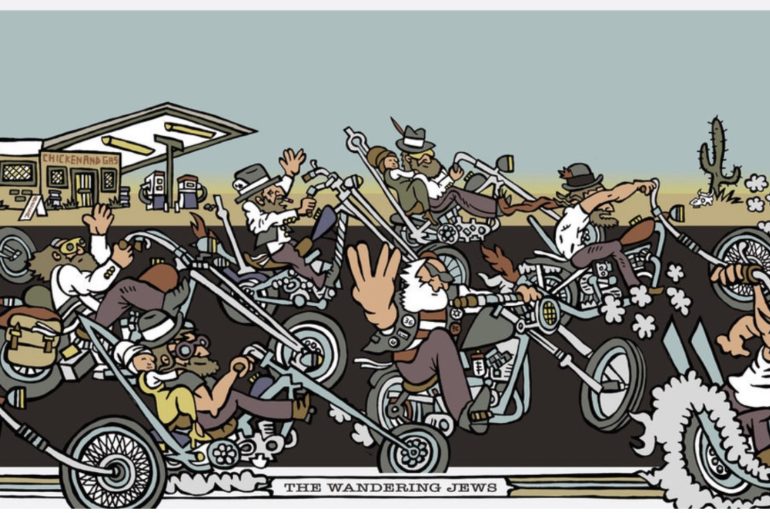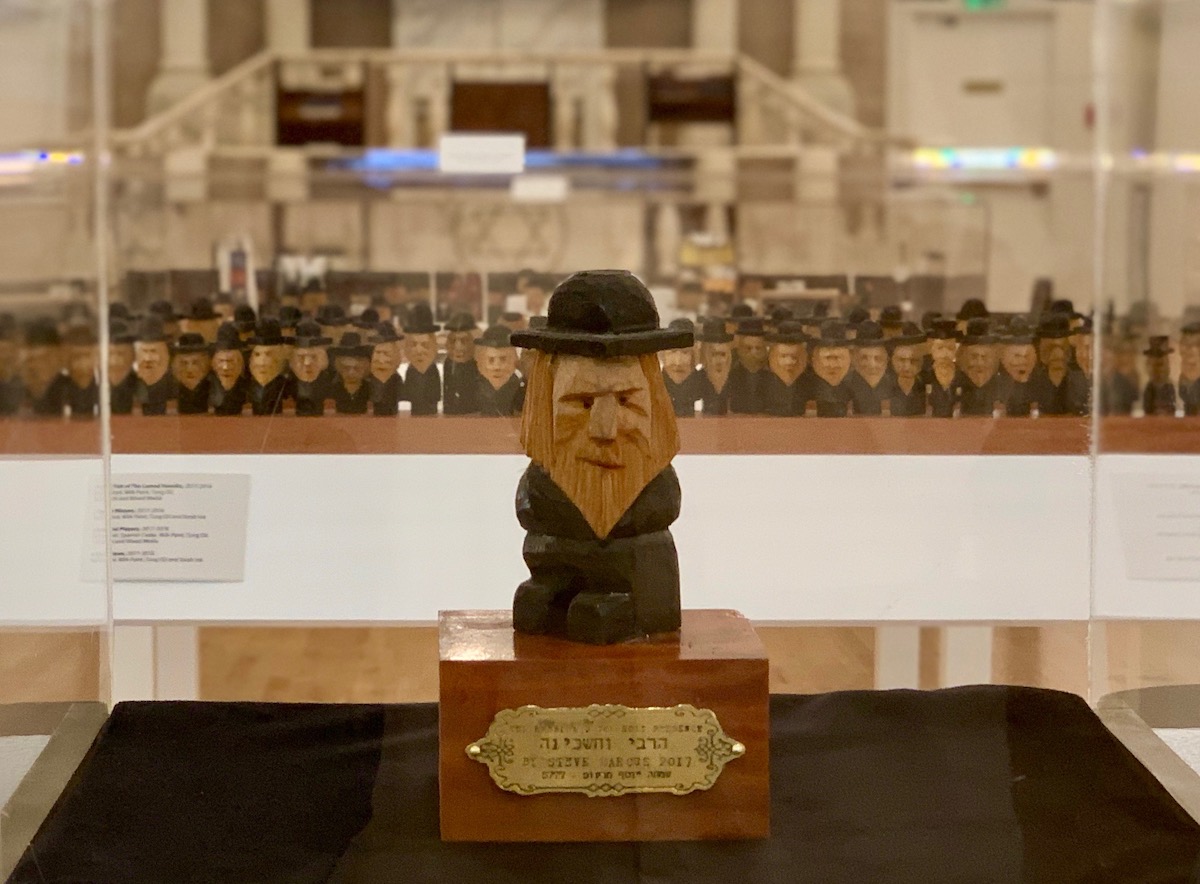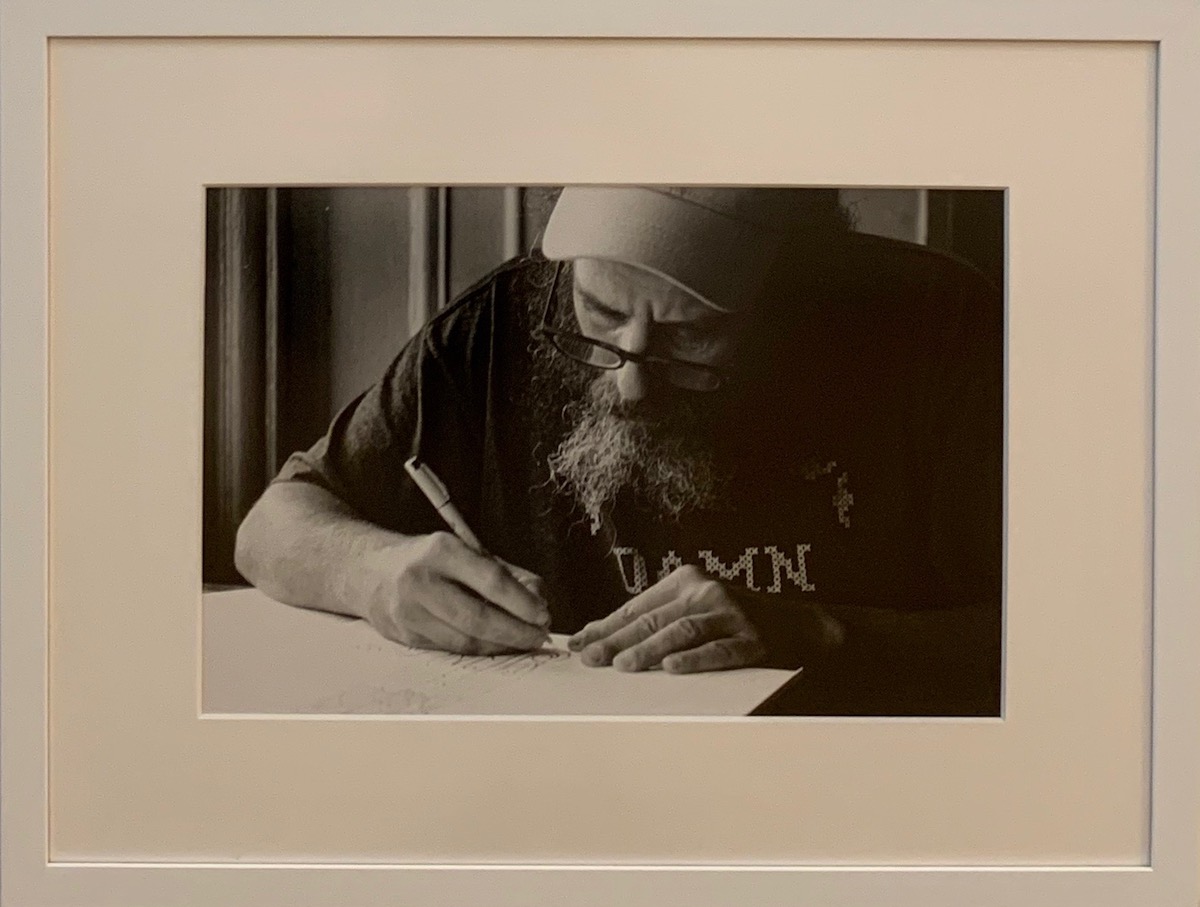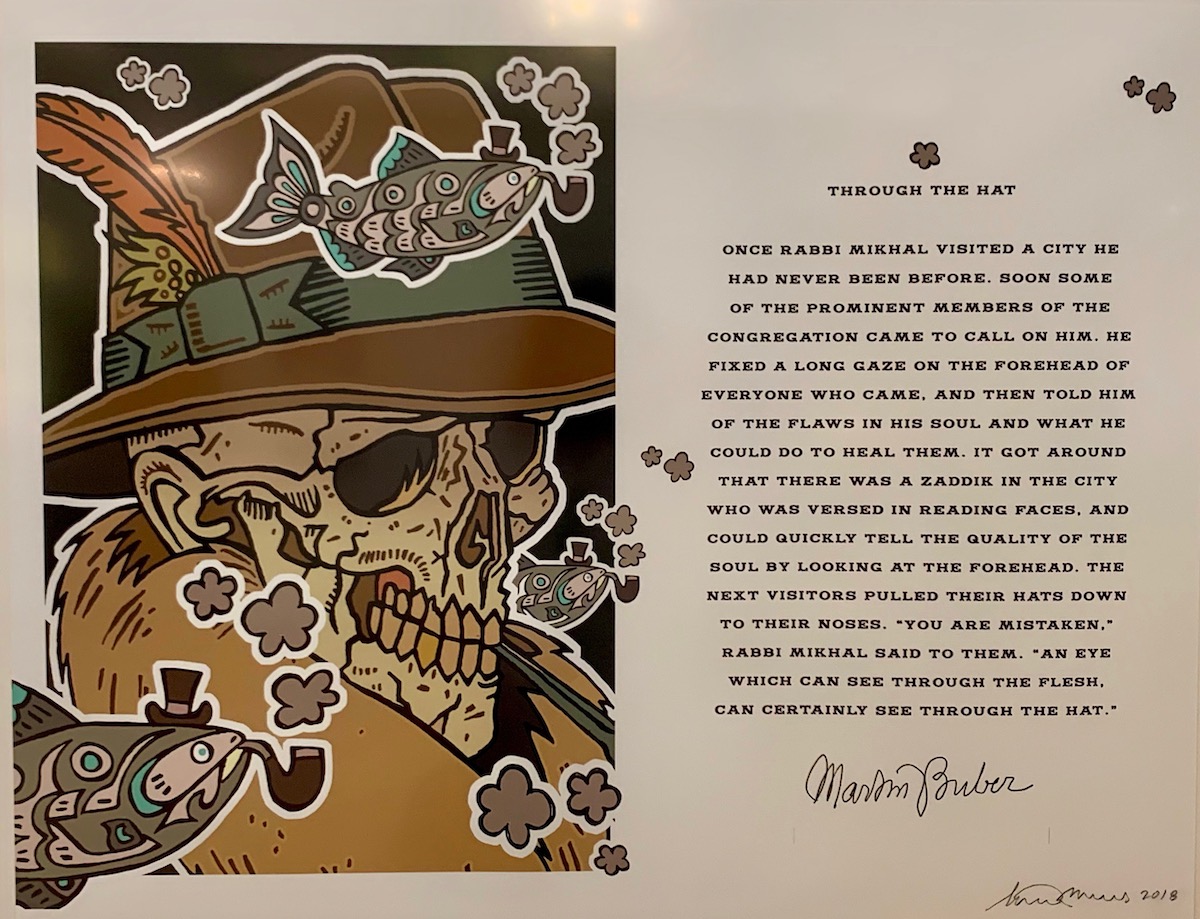
This post is also available in:

Sophisticated artist, outsider and rebel Steve Marcus, artist from the Lower East Side of New York, interpreted for the Jewish Museum of Florida, in Miami Beach, the underground folklore in kosher version with the illustrations of Through the Hat: the work of the famous novelist Norman Mailer , composed in 1964.
Steve Marcus frequently hangs out in Miami, a city where he works and promotes his art. The exhibition, exceptionally extended until September 2019, shows works of art hand-drawn on paper, carved wooden sculptures, steel miniatures, Jewish ritual objects, furniture decorated by the artist and photographs that portray him at the work, taken by the famous black and white master Sid Kaplan.
The artistic work illustrates the story of Norman Mailer from the eponymous title of the exhibition, Through the Hat, as a response to the writings Tales of the Hasidim (1923), by the Jewish philosopher Martin Buber.
Buber had developed his theory as a thought perspective whose cornerstones are the themes of dialogue and relationship. The same themes Norman Mailer talks about in his story, and the same ones shared by Steve Marcus in his work: characters who at some point in life have realized how important it was to represent the contemporaneity of Jewish culture.
Only in 2016, the son of Norman Mailer identified Steve Marcus, as the right person able to elaborate and illustrate the work of one of the greatest Jewish-American novelists, and the result was not long in coming. The artist has decided to weave his childhood memories of bagels and delis, pickles and green tomatoes, of white fish wrapped in paper, with his personal journey full of passion for his roots and for his own culture, which he cleverly combined with the art of underground comics, dragging the viewer on a journey through the emblematic black hat.

A journey he started many years ago when as a boy he decided, with the disappointment of his parents, not to study medicine or law but to study art. Art that he had the opportunity to show, sitting at a cafe, to the owner of MTV, who buys all the works and launches him on the international art scene. Steve Marcus, who believes that the best way to break the rules is to develop them, has a cryptic view of what respect for religious beliefs is in relation to which he declares himself not to be an extremist, but open to a respectful dialogue with others, with the society and the world. His vision of life is the mirror: smiling and peaceful he speaks of any subject with knowledge of cause and calmness that always reveal a profound respect for the other: Open mind in open spirit, is how he defines himself. He and his wife (she runs a successful naturopath cosmetics business) are thinking of moving to Israel to grow organic products that recall the smells and flavors of the past. In Israel, he also dreams of opening a unique and different art school.
Steve Marcus is a singular character: he always shows up at appointments wearing a baseball cap, detached from the concept of sport fans as it is rather synonymous with his simple reality and balanced thought, which indicates his spirit of understanding the social canons.

While his sculptures are roughly worked, with a detailed workmanship for the miniature knives, the artistic works are composed in a different way. Almost a ritual is to use exclusively cedar wood pencils. Of all the brands, the best quality, and all the experience of our century is that of the Blackwing Palomino pencils series, particularly very precious and expensive series. He uses them exclusively to sign his works, but the history of art is boasted with exceptional characters: Ernest Hemingway, Truman Capote, Leonard Bernstein, Quincy Jones or the godfather of Looney Tunes, Chuck Jones.
Going deeper into the subject of materials, he tells us that he has an obsession with materials that according to him: “They have to work for the artist, not the other way around“, explains Marcus, by doing a similarity with the purchase of a beautiful car that requires care that enslaves the owner.
The choice of materials is not random; the dosage of the ingredients in the composition of the colors proceeds equally like the elaboration of a cake: the result changes with the minimal variation of the ingredients. For this reason, to draw, as meticulously as he does, he exclusively uses Sakura pens, in grades 1,2,3,4,5 and 8. With the pens there is no possibility to cancel because his painstaking work does not leave space for erasures, and when something does not works, he start all over on a new sheet. He also uses the Caran D’Ache crayons that can be watered, on which then he spreads the brush and Faber Castel.
He does not work on preparatory sketches but draws directly on 10 “x14” format paper: the perfect size with which the Monkey Business (his way of calling the graphic printer) can enlarge or reduce the illustration depending on the format required by the media. According to Marcus, the work of machines will never replace the magic of a hand-made design because it doesn’t have artist’s heart. In fact, Marcus believes that the artistic process takes shape in the idea, concretely becoming the physical form that is refined through the skills that make the drawing perfect. The mind instead takes the decisions that refine the process to arrive at concretizing the idea through the heart, and it is from work to the unison of mind, heart and hands that one recognizes the true artist who perfectly carries out the execution.

A philosophy of life and thought that has brought Steve Marcus very far: His images on printed paper, published in the five continents, have traveled around the world and the Future 500 organization talks about him as one of the most influential outsiders of America.
He had received honors and awards from the American Society of Illustrators. His works have been exhibited several times at Art Basel, are exhibited at the Oakland Museum of California and in important private collections.
He co-wrote and designed “Three Thug Mice” (2008) winning several international festivals in different categories and he also composed the animations of the Red Hot Chili Peppers (RHCP) album.
He created illustrations for some of the most important international magazines and programs: MTV, The Cartoon Network, Rolling Stone Magazine, Nickelodeon, the infamous Cannabis Cup, The New York Times, Esquire, Art Forum, Time Out, Conde Nast Publications and the film World famous filmmaker in San Francisco, among others.
His love for art goes hand in hand with his love for the music, and Marcus believes it must unite, not divide. Music brought him to Cuba, where he co-founded Papaya Records and produced The Cuban Hip Hop All-Stars in Havana for Estudios Abdala, nominated for a Latin Grammy Award. The Time Magazine and New York Times have written about the influence he had on the generation of Cubaphiles, while Duke University and the University of Texas have made it a case study, recognizing its historical and cultural contribution. It is currently used in the curricula of several state universities.
In 2013, after studying the Torah and the Talmud diligently, under the guidance of esteemed rabbis, he had the opportunity and honor to create a 4 ‘x 2’ stained glass window for the Aron Ha’Kodesh installed in Beit Medresh at Mesivta Tifereth, in Jerusalem.
Many successes, a ritual for the hats from the black one with which he tells us about the contemporary kosher life to the visor one: a sort of crown that gives him the honor to promote the contribution of Jewish history in America.
.
